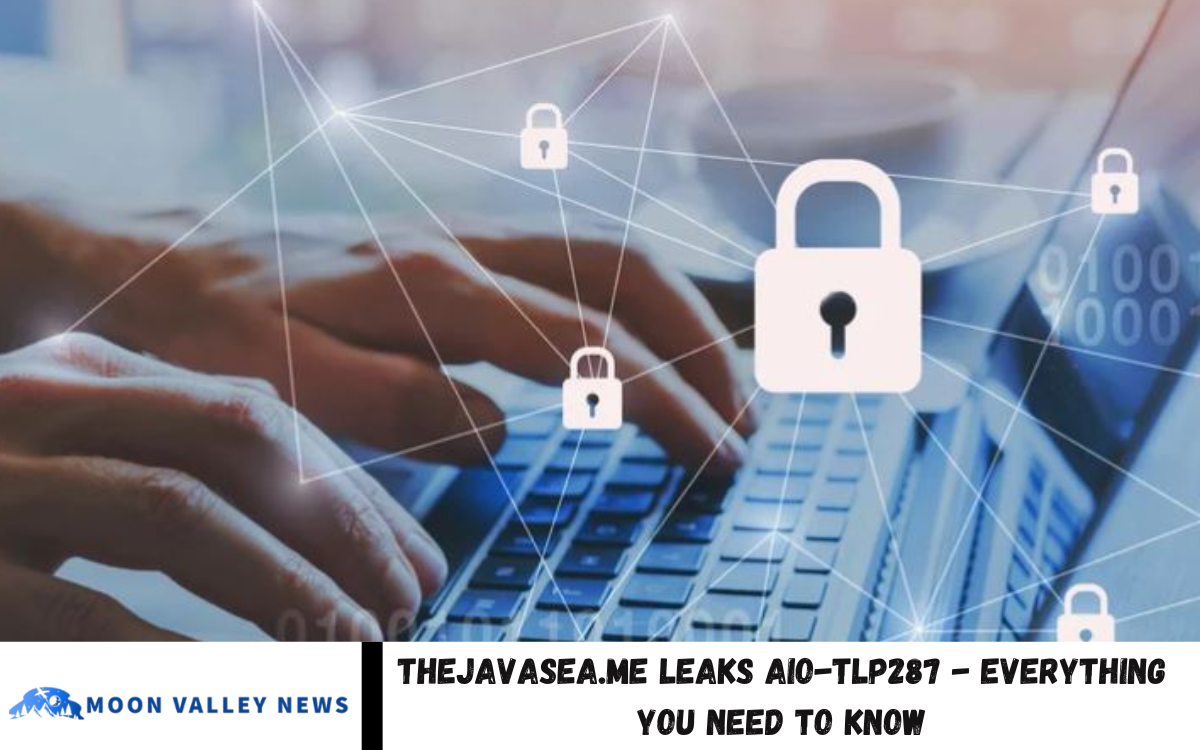Thejavasea.me has recently come under scrutiny due to the AIO-TLP287 data breach, a significant cybersecurity incident that has raised alarms across digital communities. This breach exposed a vast array of sensitive information, affecting millions of individuals and organizations worldwide.
AIO-TLP287, where “AIO” stands for “All-In-One” and “TLP” refers to the Traffic Light Protocol for data sensitivity classification, is a comprehensive dataset that was compromised during this breach. The “287” likely serves as a unique identifier for this particular leak.
The addresses and financial details, including login credentials (usernames and passwords); corporate data (internal communications and proprietary documents); and software-related information (source code and development databases). This extensive exposure has led to heightened concerns about identity theft, financial fraud, and corporate espionage.
What Is Thejavasea? Me and AIO-TLP287 Leak?
Thejavasea.me is an online platform that hosts and distributes various digital content, including software tools, automation scripts, and other resources. Recently, it has gained attention due to the AIO-TLP287 leak, a significant data breach that exposed a vast amount of sensitive information.
AIO-TLP287 refers to a specific dataset or package that was compromised during the breach. The term “AIO” stands for “All-In-One,” indicating that the package contains a comprehensive collection of data and features. “TLP” refers to the Traffic Light Protocol. The number “287” likely identifies this particular batch within a series of leaks.
The leaked data includes a wide range of sensitive information, such as:
- Personal Identifiable Information (PII): Names, email addresses, phone numbers, and physical addresses.
- Login Credentials: Usernames, passwords, and two-factor authentication details.
- Financial Information: Credit card numbers, banking details, and transaction histories.
- Corporate Data: Internal communications, project files, and proprietary documents.
This breach has raised significant concerns regarding privacy, security, and the ethical implications of distributing such sensitive data. Users and organizations affected by this leak are unauthorized access to confidential information.
The AIO-TLP287 data breach, associated with the platform Thejavasea.me, has emerged as a significant cybersecurity incident, exposing a vast array of sensitive information.
What Is AIO-TLP287?
AIO-TLP287 refers to a specific dataset or package that was compromised during the breach. “AIO” stands for “All-In-One,” indicating a comprehensive collection of data, while “TLP” denotes the Traffic Light Protocol, classifying the sensitivity of the information. The number “287” likely identifies this particular leak within a series.
Types of Data Exposed
The breach has reportedly compromised various categories of sensitive information:
- Personal Identifiable Information (PII): Names, email addresses, phone numbers, and physical addresses.
- Login Credentials: Usernames, passwords, and two-factor authentication details.
- Financial Information: Credit card numbers, banking details, and transaction histories.
- Corporate Data: Internal communications, project files, and proprietary documents.
- Software Data and Tools: Company systems, databases, scripts, and confidential reports.
How the Breach Occurred
While the exact methods remain under investigation, several potential causes have been identified:
- Weak Security Measures: Outdated encryption or lax access controls may have facilitated unauthorized access.
- Phishing Attacks: Deceptive emails or messages tricking users into revealing credentials.
- Exploitation of Vulnerabilities: Hackers exploiting software flaws or unpatched systems.
- Misconfigured Servers: Publicly accessible storage or databases leading to data exposure.
Impact Assessment
The repercussions of this breach are far-reaching:
- For Individuals: Increased risk of identity theft, financial fraud, and unauthorized account access.
- For Organizations: Potential loss of intellectual property, operational disruptions, and reputational damage.
- For the Digital Ecosystem: Erosion of trust in online platforms and heightened awareness of cybersecurity vulnerabilities.
Mitigation Measures
To safeguard against such breaches, individuals and organizations should:
- Change Passwords: Immediately update passwords, ensuring they are strong and unique.
- Enable Two-Factor Authentication (2FA): Adds an extra layer of security to accounts.
- Monitor Accounts: Regularly review financial statements and online accounts for unusual activity.
- Be Cautious of Phishing Attempts: Avoid clicking on links or downloading attachments from unknown sources.
- Implement Robust Security Protocols: Organizations should conduct regular security audits, encrypt sensitive data, and educate employees about cybersecurity best practices.
The AIO-TLP287 breach serves as the critical importance of robust cybersecurity measures.
Read Also: Apple Skips Ahead: Jumps Straight From iOS 19 to iOS 26
How the Leak Affects Individuals and Organizations
The AIO-TLP287 leak has serious consequences for both individuals and organizations, exposing them to a wide range of risks and challenges.
Impact on Individuals
- Identity Theft: Personal details, such as names, addresses, and contact information, can be used by criminals to impersonate victims, leading to fraud and identity misuse.
- Financial Loss: Exposure to banking details and credit card information increases the risk of unauthorized transactions and financial scams.
- Account Compromise: Leaked usernames and passwords may allow hackers to access personal accounts, including email, social media, and online services.
- Privacy Invasion: Sensitive personal information can be shared or sold without consent, resulting in emotional distress and a loss of privacy.
Impact on Organizations
- Data Theft: Confidential company information, including trade secrets and internal communications, can be stolen and used by competitors or malicious actors.
- Reputational Damage: A breach undermines trust among clients, partners, and employees, damaging the organization’s public image.
- Financial Costs: Organizations may incur regulatory fines, legal fees, and expenses associated with breach mitigation and recovery.
- Operational Disruption: Cyberattacks following a leak can disrupt normal business operations, resulting in a loss of productivity and revenue.
- Increased Security Pressure: Companies must invest more in cybersecurity infrastructure and employee training to prevent future breaches.
The AIO-TLP287 leak underscores the importance of safeguarding sensitive data and implementing robust security measures and organizations.
Frequently Asked Questions
Can I check if my data was leaked?
Currently, specific tools or notifications related to this leak may be available from cybersecurity services, but it’s best to stay alert and monitor your accounts.
What should I do if my data was leaked?
Change your passwords immediately, enable two-factor authentication, monitor your accounts closely, and be cautious of suspicious emails or messages.
How can organizations protect themselves after such a leak?
Organizations should conduct security audits, enhance encryption, train employees on cybersecurity, and improve their incident response plans.
Is Thejavasea.me taking responsibility for the breach?
Details about the platform’s response vary, but affected platforms typically investigate breaches and work to strengthen security.
How can such breaches be prevented in the future?
Prevention requires strong cybersecurity practices, including regular software updates, robust password management, employee training, and comprehensive security policies.
Conclusion
The Thejavasea. I Leak AIO-TLP287 represents a serious threat to data and corporate information. Leak This incident highlights the vulnerabilities present in many online platforms and the critical need for stronger cybersecurity measures. Both individuals and organizations affected by the leak face risks, including identity theft, financial fraud, and loss of confidential data. Moving forward, users need to remain vigilant by updating passwords, enabling two-factor authentication, and closely monitoring their accounts.



